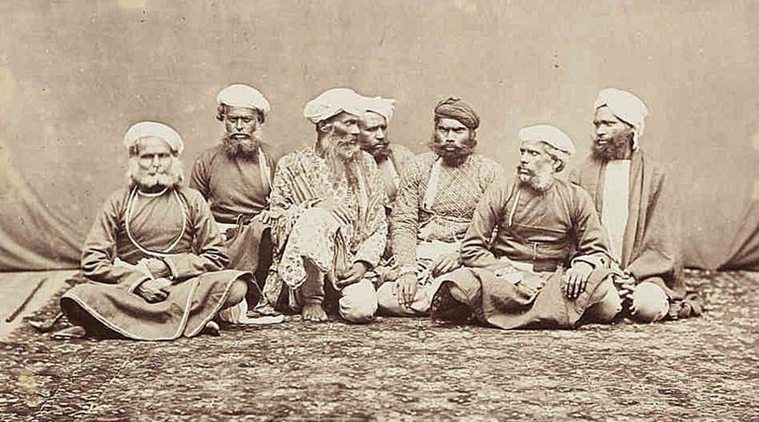
In 1836, the intriguingly-named Military Orphans’ Press in Calcutta published an extraordinary book titled Ramaseena by William Henry Sleeman, who had been charged with the elimination of the cult of Thuggee by Governor-General William Bentinck. It was an exhaustive vocabulary of 515 pages of the cant used by the Thugs, which they used to speak freely while keeping their activities secret. If a scout called out for “Lopee Khan,” for instance, it was time to hide (from the Sanskrit lop — vanish). But other code names were quite inscrutable, like the lookout’s call signalling danger: “Lutchmun Singh!”
About 125 years later, a teacher of linguistics in Kolkata’s Sanskrit College began his research on the criminals’ cant of the Bengal of his time, and it was published in 1972 as Aparadh Jagater Bhasha (‘The Language of the World of Crime’). Bhakti Prasad Mullick acknowledges the encouragement of the linguists Sukumar Sen and Suniti Chatterji, along with the scientist Satyendranath Bose (of Bose-Einstein Condensate fame). At that time, Calcutta offered rich pickings for the student of the language of crime. Unemployment and inequality were rife, trade union and Naxalite violence commonplace and, as Mullick states, there was no state in the Union whose native criminals had not swung by India’s most decadent city in search of windfall fortunes. The cant that he reports is a bewildering mix of Bangla, Hindi, Bhojpuri, Magadhi, Urdu and Punjabi (Bengali itself has a large number of Central Asian words).
Mullick scoured the jails and low life of West Bengal in search of cant. His research began with a pickpocket, the son of a well-educated man, who fell into bad company. He could not imagine returning home, because he could not wake up without his “bed tea”, a stiff drink. The fieldwork was hard going, exposing him to situations that the middle class abhorred. He writes of fleeing a room where two drunks suddenly erupt into a fight, though the only other person in attendance, a girl child, looks on without a flicker of emotion. On the other hand, in a filthy chandu (opium) den, the smokers flee in confusion upon seeing him, overturning a stove and singeing his clothes.
“Language provides the map of human civilisation, revealing the environment, mentality and education of the speaker,” Mullick writes. And he describes a brutal society where lethal street violence involving firearms, spears and knives is commonplace. He also writes of bit-characters like lepers, arrested for transporting illicit liquor. Garbage collectors were famed in that field, too, hiding football bladders and bicycle tyre tubes filled with alcohol in the filth in their carts.
Mullick separates Bengal’s criminality into two broad branches — professional criminals on the one hand, and on the other, young people gone to the bad, up and coming goondas and thugs. Their professional designations are stirring: Gabbabaz (burglar), tolanbaz (luggage thief), kotna kotni (pimp), jaliat (forger), along with “wagon-breakers” (a popular calling, since a lot of valuable coal passed through the state). And there is that novelty of the Sixties, the babu-chor (white-collar criminal).
Each group has its own cant. The pickpocket’s is not the same as the cardsharp’s. If you heard someone say, “Light a beedi,” on a bus or tram (smoking on board was allowed), you would know that pockets were about to be picked. On the other hand, a cardsharp might say “rasgulla” (indicating a ten), “samosa” (a three, on account of the number of corners) or “bedbug” (50 paise).
Cants are a subset of social languages. The speech of Santiniketan is not that of neighbouring Bolpur, the administrative headquarters, Mullick points out as an example of legitimate social languages. Indeed, neighbourhoods of Calcutta used to have markedly different inflections and vocabularies. But much of the criminal cant that Mullick writes of is fairly general, and has been kept alive in the colourful speech of college students. A “cabbage” could refer to a dolt, brains or a Punjabi, take your pick. “Dalai Lama” is marijuana (Manali is not too far from McLeodganj, one supposes). So is “Bholanath”. In the underworld, nothing is sacred. “Fung” is cocaine supplied by Chinese pushers (there was a sizeable population in Calcutta). Weapons are code-named: ghoda (from the trigger) is a revolver, a gadha a country-made pistol, an anda is a bomb. (Modern equivalents are “machine” for pistol and “lebu” (lime) for knife.) “Mama” is a police informer, “Baba” is a policeman known to the gang, and “Dada” is a thug. Some things never change.
But a lot of the vocabulary has fallen from grace, 50 years after it was compiled. A “Kulin” was a classy prostitute. A “charkha” could have been a watch, a gramophone or a bicycle. Illicit liquor was Vat 70 (one better than Vat 69, a once-popular blended Scotch). One wonders if there are more such vocabularies of criminal secret languages in India, other than Sleeman’s Ramaseena. Many have been investigated in other countries — Fenya of the Russian underworld, Grypsera in Poland, and the pan-European Polari. India, with its impressive linguistic diversity, should have produced several thieves’ cants.
Pratik Kanjilal lectures a surprisingly tolerant public on far too many issues.